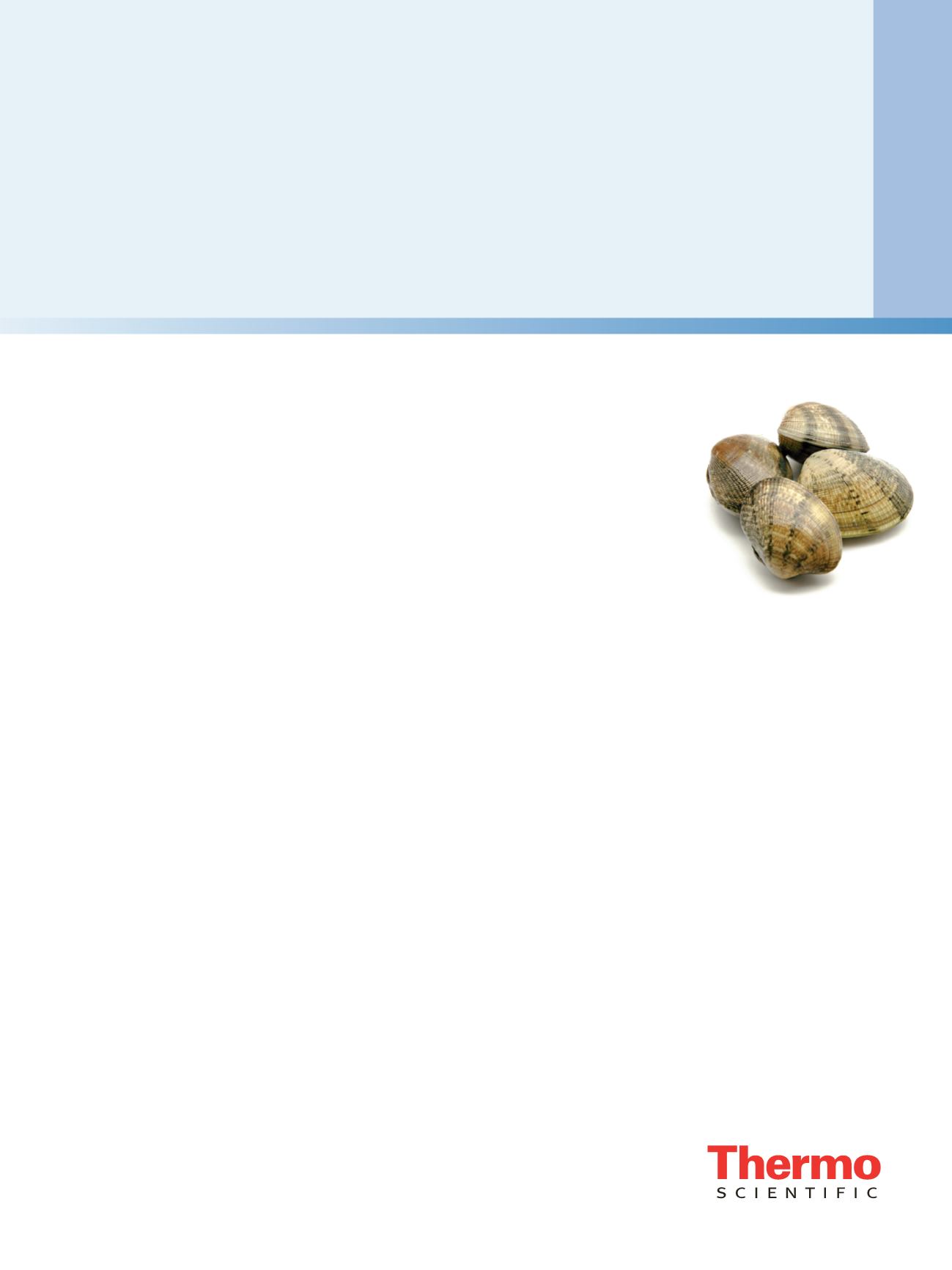

Comprehensive Solutions for Screening,
Quantitation and Discovery of Marine
Biotoxins and Their Metabolites in Shellfish
Michal Godula, Thermo Fisher Scientific, Prague, Czech Republic
White Paper 64018
Executive Summary
In recent years, many countries have had to deal with the negative effects of toxic microalgal
blooms in both marine and fresh water, such as the death of wild animals and domestic livestock.
The food most frequently involved in episodes of human poisoning are bivalve mollusks. As they
filter large quantities of water for tropical reasons, these shellfish can accumulate and concentrate
biotoxins present in the plankton they ingest.
There are a series of regulations issued by the regulatory agencies concerning the control of
lipophilic toxins in bivalve mollusks destined to market for human consumption. In the past,
bioassays on mice were predominantly used. However, liquid chromatography coupled with
mass spectrometry (LC-MS) presents a viable alternative for today’s analysts.
The purpose of this document is to describe possible alternatives for comprehensive analysis of
marine biotoxins in various samples, applying LC-MS based on either a triple quadrupole mass
spectrometer or a high-resolution accurate-mass mass spectrometer.
Introduction
In recent years, many countries have had to deal with the negative effects of toxic microalgal
blooms in both marine and fresh water, such as the death of wild animals and domestic livestock.
Several cases of poisoning in humans have been associated with the direct consumption of shellfish,
fish or water contaminated by algal toxins. People may also come into contact with toxins during
recreational activities along sea coasts that are affected by episodes of algal blooms. Depending
on the type of toxin involved, there are forms of mild and usually self-limiting symptoms,
characterized by gastrointestinal disorders or allergy-like episodes. Much more severe neurological
symptoms can lead to death of the affected person.
The foods most frequently involved in human poisoning are bivalve mollusks. When filtering large
quantities of water for tropical reasons, these shellfish can accumulate and concentrate the biotoxins
present in the plankton they ingest. Moreover, it is not possible to evaluate their edibility only by
an organoleptic examination. While human ingestion of contaminated food with biotoxins can
lead to the onset of different clinical symptoms, in shellfish they usually have only marginal effects.
An important risk factor lies in the thermostability of such molecules, which are not completely
inactivated by common physical treatments carried out on fish products (cooking, smoking, salting,
freezing, housing) and remain virtually unchanged in the finished product.
Keywords
Marine Biotoxins, Exactive Plus,
Orbitrap, Triple Quadrupole MS/MS,
UHPLC



















